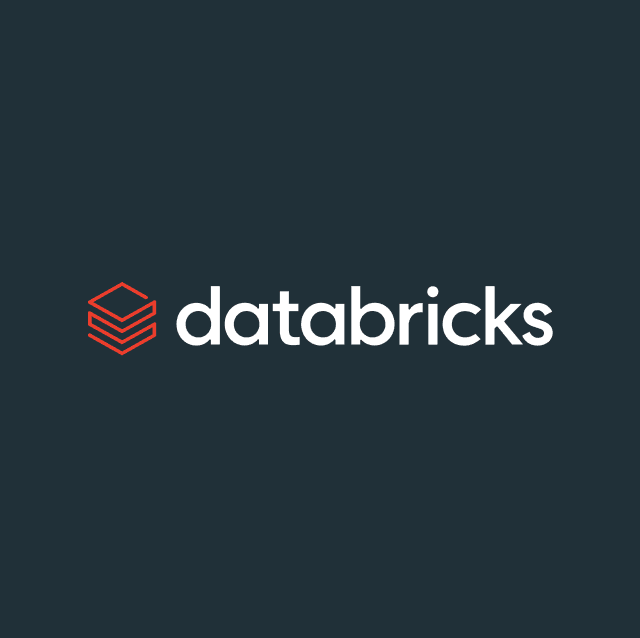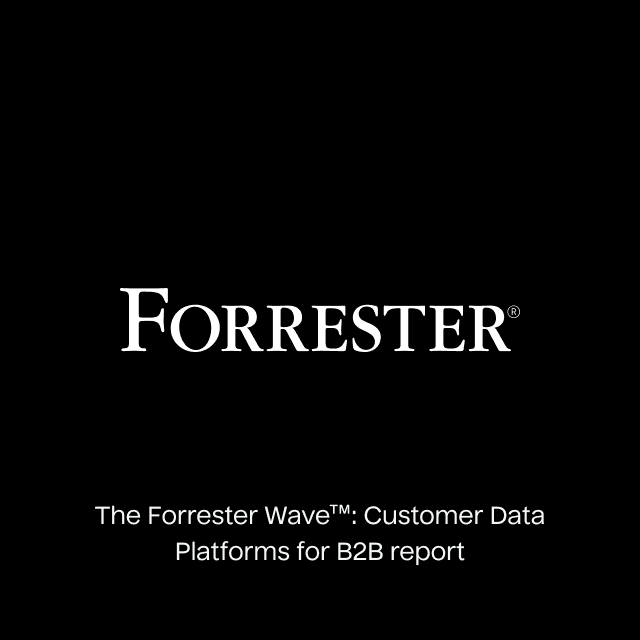As the advertising ecosystem moves toward stricter privacy standards, marketers face increasing challenges with browser-based tracking. Ad blockers, third-party cookie deprecation, and regulatory changes make it harder to capture and attribute conversions reliably. Google's Conversions API [Enhanced Conversions for Web via API] addresses these issues by allowing you to send server-side conversion events from your systems directly to Google. This approach enhances match quality, respects user consent, and provides richer signals for Google’s bidding algorithms.
In this guide, we’ll show you how to set up the Google Conversions API using Hightouch so you can send consented conversion data directly to Google, unlock advanced bidding strategies like target ROAS, and future-proof your performance marketing efforts.
How to set up Google conversion API?
The Google Ads Conversion API (also known as Enhanced Conversions for Web via API) allows you to send web and offline conversion events directly from your server to Google. This ensures better data accuracy and attribution, especially as browser-based tracking becomes less effective due to privacy changes and cookie restrictions. With Hightouch, you can set up the Google Ads Conversion API in just a few steps:
1. Connect to your data source

Start by creating a Hightouch account. Once you're logged in:
- Navigate to the Integrations, then Sources.
- Select the data source that contains your event and customer data. This could be a data warehouse like Snowflake, BigQuery, Redshift, or a database like Postgres or MySQL.
- Enter your configuration details, such as credentials and hostnames, to authenticate your data source.
Hightouch will validate your connection and give you access to the schema for building your data model.
2. Define your data model

Next, define the event data you want to send to Google. You can do this in three ways:
- SQL Editor: Write custom SQL to join and transform data for precise control.
- Table Selector: Choose pre-built tables and columns directly without needing SQL.
- Visual Audience Builder: Use a no-code interface to filter and segment your data based on behavior, properties, or timestamps.
This data model acts as the source of truth for what gets sent to Facebook. Typical fields include user identifiers (email, phone), event names (purchase, signup), and metadata (value, currency, timestamp).
3. Create a Google conversion destination
Now it’s time to connect Hightouch to Google:
- Go to the Integrations, then Destinations.
- Click Add Destination and select Google Conversions.
- Log in to Google Ads to authorize the connection.

4. Send conversions to Google
Finally, you’ll configure your sync:
- Got to Activation, then Syncs.
- Click Add sync.
- Choose the model you created and your Google destination.
- Map the data fields in your model to Google’s expected parameters
- Run your sync.

You can monitor delivery logs, retry failures, and view real-time sync metrics in the Hightouch dashboard.
What is the Google conversions API?
The Google Conversions API (also known as Google Enhanced Conversions) is an alternative to traditional web pixels and JavaScript tags and a more accurate way to send conversion data back to Google Ads. This direct, server-side approach allows you to leverage your 1st-party data and control exactly what user-completed events and associated values you send to Google Ads so you can optimize your campaigns toward the outcomes that matter most to your business and avoid the deliverability issues caused by ad blockers and browser restrictions.
Benefits of using Google conversion API
The Google Ads Conversion API (Enhanced Conversions for Web via API) offers advertisers a more resilient and precise way to send event data to Google, enabling better campaign performance and measurement. Unlike browser-based tracking (e.g., Google Tags), the API operates server-side, reducing data loss and enhancing targeting, even as privacy regulations tighten.
- Lower your cost per action (CPA) by up to 13%
By reducing signal loss and giving Google a more complete view of user behavior, the Conversion API helps improve ad delivery optimization. It enables more accurate event matching and supplies better training signals to Google’s bidding algorithm, resulting in smarter targeting and bidding. Altogether, this leads to lower CPAs and allows your budget to go further. - Increase attributed purchase events by up to 19%: When tracking breaks due to ad blockers, iOS restrictions, or cookie limitations, Google may undercount conversions. The Conversion API solves this by sending events directly from your server, making them less likely to be blocked. You can also use deduplication to send both browser and server-side events. This ensures more conversions are accurately attributed to your campaigns and improves Google’s optimization engine.
- Boost your return on ad spend (ROAS): More complete and reliable conversion data enables Google to make better optimization decisions. This translates into sharper audience targeting and more efficient budget allocation toward high-performing segments and placements. As a result, your campaigns deliver stronger performance, especially when optimizing for key actions like purchases, signups, or leads.
- Unlock better measurement and attribution: With server-side tracking, you gain more control over what data you send to Google and how it is structured. You can include offline events like in-store purchases or phone sales, enrich conversion events with custom fields such as customer lifetime value (LTV), product SKU, or funnel stage, and apply deduplication logic to avoid counting the same event twice. This flexibility improves your analytics and helps align Google optimization with real business outcomes.
- Future-proof campaigns against privacy changes: As browser vendors and operating systems roll out stricter privacy features like third-party cookie blocking and App Tracking Transparency, traditional pixel-based tracking becomes less reliable. The Conversion API lets you maintain robust conversion tracking using first-party data delivered from your server, which is more resilient to these restrictions. That means you can continue measuring and optimizing campaigns even in a privacy-first digital landscape.
What's the difference between a pixel & the Google conversions API?
A traditional pixel runs in the user’s browser or app and automatically sends conversion events to Google when certain actions occur. While easy to implement, browser-based pixels have become increasingly unreliable due to ad blockers, privacy restrictions, and network interruptions. These issues can lead to lost conversions, inaccurate attribution, and degraded optimization performance.
The Google Conversions API (Enhanced Conversions for Web via API) solves this problem by allowing you to send conversion data directly from your server to Google. This server-side approach is more secure, more reliable, and gives you full control over what data you share, how it's structured, and when it’s delivered.
Although conversion APIs require a slightly more advanced setup, they provide a significantly more resilient foundation for long-term measurement and campaign success.
Here’s a quick table highlighting the difference between a traditional web pixel and the Google Conversions API:
| Feature | Traditional Pixel | Google Conversions API |
|---|---|---|
| Tracking Method | Track events using web script or mobile SDK | Track and store events in your data warehouse or another internal system (e.g., CRM or CDP) |
| Delivery Method | Events sent client-side via web script or mobile SDK | Events sent server-side via API from your server to Google |
| Reliability | Frequently blocked by ad blockers, cookie restrictions, & network interruptions | No interference from ad blockers, browsers, or operating systems |
| Supported Properties | Typically only supports website conversions | Supports both online & offline conversions |
| Privacy & Compliance | Limited control over what data you share with Google | Maintain complete control over exactly what data you share with Google to manage opt-out compliance |
| Benefits | Easy to implement | Better spend efficacy, more accurate attribution, & better consent management |
Why are companies switching to conversion APIs?
Client-side tracking has become increasingly unreliable due to the rise of ad blockers, browser-level privacy features like Safari’s Intelligent Tracking Prevention (ITP), and operating system policies such as Apple’s App Tracking Transparency (ATT). These changes limit the effectiveness of traditional web pixels and make it harder for marketers to measure performance, optimize campaigns, and report accurately.
To address this, nearly every major ad platform, including Google, has introduced server-side conversion APIs. These APIs give advertisers a more dependable and privacy-compliant way to send conversion data, helping ensure that performance data remains actionable despite modern tracking limitations.
Here are three key reasons why advertisers are moving to the Google Ads Conversion API:
- Offline conversion tracking: Capture and send conversions that don’t happen online, such as in-store purchases, phone orders, or lead progression inside your CRM. This is especially important for B2C retailers with brick-and-mortar locations or B2B companies with offline sales cycles. With server-side delivery, you can ensure these valuable touchpoints are included in your campaign performance.
- Advanced matching: Boost your Event Match Quality (EMQ) by enriching conversion events with first-party data like email addresses, phone numbers, and postal codes, along with additional system identifiers such as IP address or user-agent. This helps Google more accurately associate events with the correct user, improving attribution, targeting, and optimization.
- Value-based bidding: Send not just events, but the revenue or predicted value associated with each conversion. This allows Google’s bidding algorithms to focus on actions that drive the most business value, not just volume. Whether you’re optimizing for purchases, subscriptions, or qualified leads, value-based bidding ensures your budget is directed toward the outcomes that matter most.
Google CAPI use cases
With the Google Ads Conversion API, you can tailor your setup and bidding strategy to align with your business objectives. Whether focused on driving more conversions, increasing revenue, or maximizing profit, Enhanced Conversions via API allows you to send Google the data it needs to optimize campaigns accordingly.
Optimize for conversion volume
To optimize for conversion volume, configure your setup to send conversion events without attaching revenue or monetary values. These events represent actions like purchases, signups, or applications, which aim to increase quantity. Use Google’s Maximize Conversions or Target CPA bidding strategies to drive the highest conversions at the lowest cost per action.
| Industry | Optimization Goal |
|---|---|
| Retail & E-commerce | Maximize the volume of purchase events on the website, in-app, and in-store. |
| Media & Entertainment | Maximize the volume of subscription sign-ups. |
| Financial Services | Maximize the volume of loan applications submitted. |
| B2B SaaS | Maximize the volume of demo requests or product signups. |
| Travel | Maximize the number of flights or rooms booked. |
| Healthcare | Maximize the volume of health service signups. |
| Education | Maximize the volume of enrollments for a course or event. |
Optimize for conversion value
To optimize for conversion value, send the gross revenue associated with each conversion event, such as the order or subscription amount. Google’s Maximize Conversion Value or Target ROAS bidding strategies will aim to increase total revenue from your ads rather than just the number of actions.
| Industry | Optimization Goal |
|---|---|
| Retail & E-commerce | Maximize the gross revenue value of each purchase. |
| Media & Entertainment | Maximize the gross revenue from the first subscription payment (e.g., bid more for premium subscription signups). |
| Financial Services | Maximize the potential value of loan applications submitted (e.g., bid more on users who are more likely to apply for large loans). |
| B2B SaaS | Maximize the volume of qualified demo requests or product signups. |
| Travel | Maximize the gross revenue value of flights or rooms booked. |
| Healthcare | Maximize the gross revenue value of health service signups. |
| Education | Maximize the gross revenue value of enrollments for a course or event signup (e.g., bid more for premium courses or packages to increase LTV). |
Optimize for financial outcome
To optimize for financial outcomes like profit or customer lifetime value, calculate and send the predicted financial value of each conversion. This could be estimated profit margins, post-cost revenue, or LTV. Then use Google’s Maximize Conversion Value or Target ROI bidding strategies to align ad spend with real business performance.
| Industry | Optimization Goal |
|---|---|
| Retail & E-commerce | Maximize the estimated profit of purchases by subtracting the estimated cost of goods sold, taxes, and fees (e.g., shipping). |
| Media & Entertainment | Maximize the estimated lifetime value of subscription purchases (e.g., bid more to convert users who are more likely to be retained). |
| Financial Services | Maximize the predicted value of loan applications submitted (e.g., bid based on likelihood of loan approval and estimated interest value). |
| B2B SaaS | Maximize the predicted revenue value of demo requests or product signups (e.g., bid using intent data, lead scoring, and predicted ACV). |
| Travel | Subtract the cost of goods sold, taxes, and fees to maximize the estimated profit from flights or rooms booked. |
| Healthcare | Maximize the gross profit value or estimated lifetime value of health service signups. |
| Education | Maximize the gross profit or estimated lifetime value (if recurring) of a course or event signup (e.g., bid based on estimated profit margins from offering or likelihood to retain subscriber). |
What events does the Google conversions API support?
Google supports a wide range of conversion events through its Conversion API, allowing you to track and optimize actions across the entire customer journey, from website interactions to offline purchases. These events can be submitted from various environments, including web, mobile apps, CRM systems, and in-person touchpoints.
While Google allows you to define custom conversion actions tailored to your business, it strongly encourages mapping your events to standardized conversion action categories. This improves performance by allowing Google’s AI systems to better optimize campaigns based on known event types.
Here’s a breakdown of the standard conversion action categories supported by Google Ads:
| Category | Event Type | Goal |
|---|---|---|
| Sales Events | Purchase, Add to cart, Begin checkout, Subscribe | Track and optimize toward purchases |
| Lead Events | Qualified lead, Converted lead, Submit lead form, Book appointment, Sign up, Request quote, Get directions, Outbound click, Contact | Track and optimize toward lead capture |
| Further Events | Page view, Other | Track and optimize non-standard actions |
FAQS
Where can I access the Google conversions API?
You can read more about the Google Conversions API (Enhanced Conversions for Web via API) in Google’s official documentation. Depending on your implementation method and access level, you may need to work with your Google Ads account manager or engineering team to properly configure server-side tracking. You can also set it up using reverse ETL platforms like Hightouch.
How do I check if the Google conversions API is working?
To verify that Google is receiving your events, check for successful API responses in your platform logs and use the Data diagnostics section within your Google Ads account. Google will display the number of enhanced conversions successfully received and matched. After setting up, run a campaign and monitor whether conversions are attributed to your ads.
Note: If you don’t see any attributed conversions, it may not be an issue with the setup—your ads might simply not be converting yet.
What match rate should I expect from the Google conversions API?
Match rates depend heavily on the quality and completeness of the data you send. Including multiple identifiers, such as system attributes (e.g., IP address, user-agent), customer attributes (e.g., email, phone number), and pseudonymous identifiers (e.g., Click ID, Mobile Ad ID), can significantly improve your match quality. Check the Data Diagnostics tool in your Google Ads account to view your match rate and get suggestions for which attributes could boost performance.
How often should I upload conversions
While Google accepts conversions in real time, the best practice is to upload conversion events daily to provide timely feedback to Google’s bidding algorithm. Frequent uploads can improve optimization by helping the system learn and adapt faster.
What data should I include when uploading conversion events?
To ensure the highest match rates and attribution accuracy, each conversion event should include the following parameters:
- System Event Parameters: Required fields that define the event type and timing (e.g., event name, event ID, event date, timestamp).
- Consent Parameters: Attributes that indicate how data should be used, based on user consent and regional privacy regulations.
- Customer Information Parameters: Personally identifiable or pseudonymous user data used to match the event to a Google account (e.g., email, phone number, click ID, mobile ad ID, IP address).
- Conversion Value Parameters: Numeric values tied to each conversion (e.g., revenue, LTV, profit) to support value-based bidding strategies.
How long does it take for your conversion data to be available in Google Ads?
While Google receives the data almost instantly via the API, it may take up to 24 hours for the data to be processed and reflected in your campaign performance reports, especially for enhanced conversions that require hashing and matching.
Does the Google conversions API have rate limits?
Rate limits vary depending on your integration method. As of now, Google allows up to 2,000 conversions per API request. For high-volume advertisers, batching requests efficiently and monitoring throughput is essential. For more details, refer to Google’s developer documentation.















